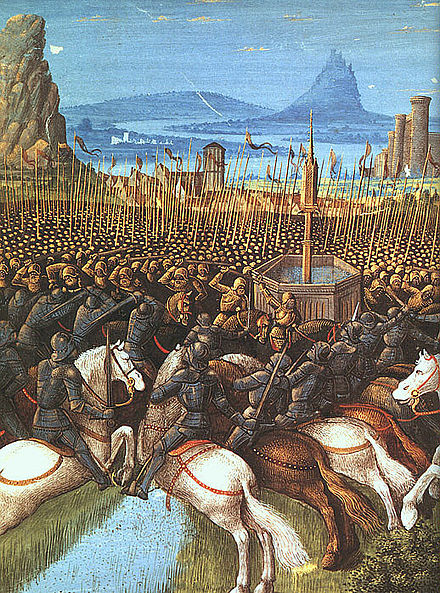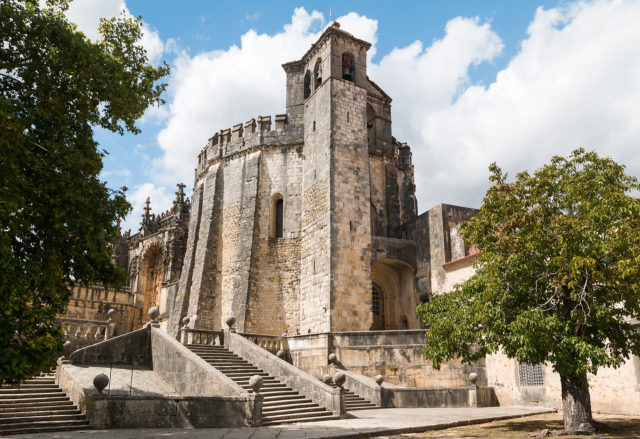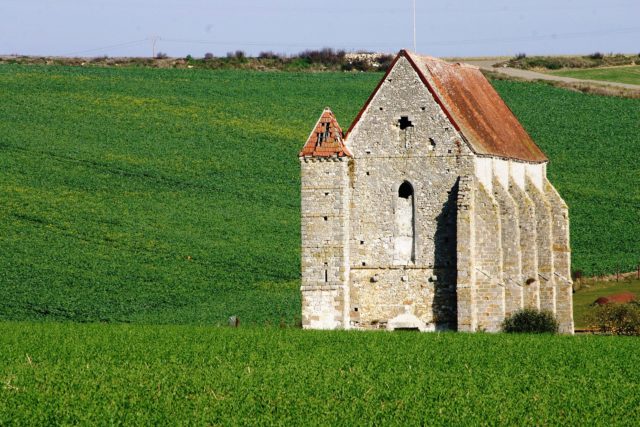The Order of the Knights Templar was one of the most feared and powerful military institutions of the Middle Ages. Strict rules reinforced their courage, skill, and discipline. Many of these were important in war.
Absolute Obedience
Medieval aristocrats had a reputation for undisciplined cavalry charges and focused on individual glory. It was a belief the Templars were determined to change.
Their rules dictated a Templar must “observe unfailing obedience to the master.” This principle of obedience, important to an army in any era, made the Templars lethal. They did not hesitate to second guess their orders. They acted swiftly and with certainty to do as they had been commanded.
A force of Templars became an extension of the will of its commander, the Grand Master.
No Breaking Ranks
Good discipline was reinforced by another of the Order’s rules. Knights did not break ranks.
The value of this rule on the battlefield was obvious. A warrior might have been in a perilous position in which his first instinct was to run. At other times, he might have seen an opportunity for glory if he broke ranks and attacked. Or he might need a rest or find a better place to fight. Any of these could have damaged a formation, endangering the whole army.
It was also important on the march. Templars often traveled through hostile lands which their enemies knew better than them. To stay safe on the road they needed to stay together in formation, ready to fight at a moment’s notice.

No Charging Without Permission
No knight could charge without permission.
The charge was one of the most powerful maneuvers available to a medieval knight. Attacking at the gallop while carrying an underarm lance, they could strike with incredible force. The sight of such a charge was enough to break some opponents.
The charge was also the best opportunity for a knight to gain fame and glory through his courage.
The Templars were not meant to concern themselves with individual glory. European aristocracy had educated them, so their craving for it was intense. The rule was set to keep them from charging until it was best for the whole army.
No Leaving the Battlefield
If a European army in the Middle East broke, it could be very vulnerable. Faster moving Muslim cavalry would pick off the soldiers as they fled.
In contrast with thoughts of flight, the Templars dedicated their lives to the service of others, both inside and outside the Order. To ensure their courage held even as others broke, they were banned from leaving the battlefield while their banner still flew. No matter how terrible the fighting became, they were to fight to the bitter end; reflected in their desperate stand at both Tripoli and Acre in the 13th century.
No Hunting (Except Lions)
Hunting was an important sport for the medieval aristocracy. Whether shooting with a bow or charging with a spear, following dogs or flying falcons, medieval aristocrats loved to hunt.
Like other worldly pursuits, it was considered a distraction from what the Templars considered their real purpose; war. In the wilds of the Middle East, there were opportunities to hunt game not seen at home.
To keep the knights focused, they were banned from all forms of hunting, with one exception. They could hunt lions. This reflected the Order’s original purpose of protecting pilgrims on the dangerous roads of the Holy Land. Muslim armies could be a threat to Christendom, but a savage lion could be a far more immediate danger to an unarmed pilgrim.

Eating in Pairs
The rule that knights should eat in pairs might seem an odd one, but it served a practical purpose. Pairing knights created a buddy system in which Templars kept an eye out for each other. As the rules stated, they could assist one another if the harshness of Templar life became too much, helping emotionally. It also meant that, on the march, every knight had another checking they had not been lost or left behind.
Organisation
The Templar rules covered practical points as well as ones of principle. The military organization of the Order was set down in the same documents that described the courage and discipline expected of knights.
These rules explained how the knights should be organized into squadrons and how they should be led. They recognized the need to adapt to circumstances, including explanations of how to fit visiting knights into Templar units. The rules stated who was responsible in the hierarchy for running which parts of the Order.

How to Leave Camp
Like the Romans before them, the Templars recognized the vulnerability of an army leaving its camp.
The way the line of march should be established before leaving camp was set out. With their equipment packed, knights could not leave until the marshal ordered it. Then they formed ranks, every soldier in his place before they set out.
How to March to War
In the order of march, each knight rode behind his squires and equipment. Ranks were kept, with no knight riding out ahead of or parallel to his position. They required permission to stop to water their horses.
If the column was attacked, the knights closest to the attackers took up arms and formed a defense. While this happened, the rest were to report to the marshal so commands could be issued, rather than joining the fray in a chaotic fashion.
The Templars lived dangerous lives. Their rules created the discipline needed to survive this.
Source:
John Howe, “The Rule” (2016), in Medieval Warfare Vol VI Issue 5.
